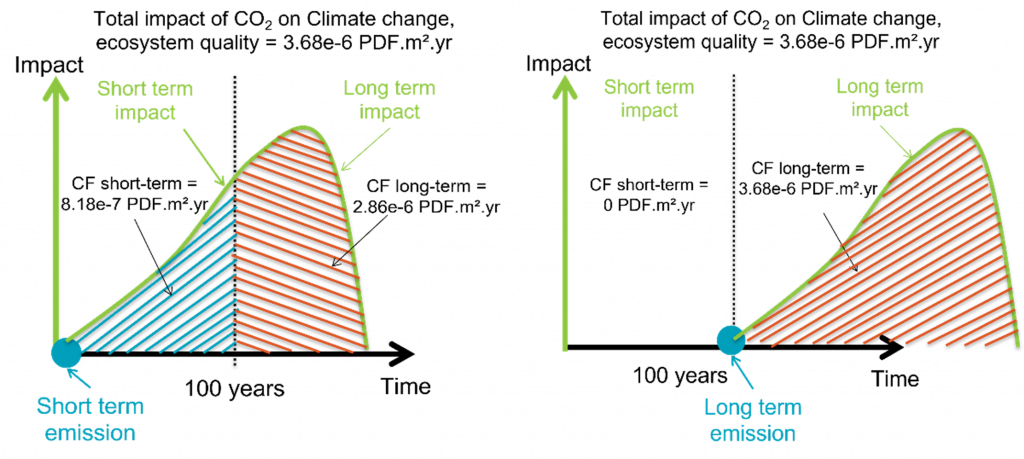IMPACT World+
Version 2.0
A globally regionalized method for life cycle impact assessment (LCIA).

Table of Contents
IW+’s updated structure to assist its operationalization
The management of IW+ in previous versions did not allow for easy, consistent and transparent updates to the LCIA models, nor even for the integration of new indicators, such as plastic leakage impacts from the work of MariLCA. Hence, our efforts with the 2.0 version focused on completely refactoring the generation process of the characterization factors to ease the update process and also increase the transparency in the generation of CF from IW+. That means that the process of generating the files containing IW+’s CF values has been entirely automated. A code was developed to automatically calculate CFs for the list of elementary flows of different database/software based on the original CFs from the published IW+ article and applying explicit rules. This code is openly accessible on Github.
The original CFs (from the published article) are contained in a Microsoft Access database. These original CFs are then read by the code and new ones are being extrapolated based on explicit rules such as stoichiometry (e.g., for acidification and eutrophication) or explicit link to new sub-compartments (e.g., from “unspecified” to “high. pop.” for GHGs) or new geographies (e.g., creation of water flows “CN-AH”).
Rules are then applied to the different elementary flows, such as forcing “groundwater” and “ocean” sub-compartment flows to zero in specific impact categories (e.g., freshwater ecotoxicity), or forcing the long-term emissions to zero for short-term impact categories.
Once all CFs are created, they are automatically mapped to the different classifications used by the different software/databases. As of now, versions of IW+ 2.0, in the right format (json, xlsx, csv…), can automatically be created for the following database/software:
-
SimaPro
ecoinvent, Agribalyse, Agrifootprint, , ELCD, Industry2.0, US-ei2.2, USLCI, WFLDB.
-
OpenLCA
ecoinvent
-
brightway2
ecoinvent
-
“pure” ecoinvent
original names for the ecoinvent database are kept
-
exiobase
a global Input-Output model
-
openIO Canada
an internal Canadian Input-Output database developed at CIRAIG
All these versions are available in open access on Zenodo and are directly importable in their respective software.
Harmonization, corrections and updates of CF
Long term emissions and time dependent impact categories
In IW+, damage categories which generate long term impacts are split between two additive time frames: short- and long-term impacts. Impacts on Climate change (both human health and ecosystem quality), Freshwater ecotoxicity, Human toxicity (both cancer and non cancer) and Marine acidification are therefore expressed over a short-term (0-100 years) and a long term period (over 100 years). Please note that the long-term impacts of Climate change are calculated over the time period 100-500 years.
In the 2.0 version, we improved the consistency between inventory and impact assessment timeframes. LCI emissions reported in some LCA inventory databases are by default considered short term emissions (i.e. generated within the first 100 years), unless specifically defined being long-term emissions (i.e. occurring beyond a 100 year timeframe). Short term emissions (i.e., most emissions in LCA inventory databases) might generate short-term impacts (< 100 years after the emission) or both short plus long-term impacts (i.e occurring from time zero until a time horizon way beyond 100 years). Therefore long term emissions reported in some LCA inventory databases (for example the emissions identified in ecoinvent with a sub-compartment with “long-term” in its name, such as: “low-population density, long-term”) are considered as generating 100% of their impact beyond the 100 year time horizon hence only have a long-term impact, characterized with the addition of short- and long-term CF. (Figure 1)

Figure 1: Long- and short-term impacts for long- and short term emissions in IMPACT World+ 2.0
Toxicity and ecotoxicity - Metal emissions in groundwater
We explicitly acknowledge that the impact of metal emissions in the groundwater compartment cannot presently be determined. It is a current limitation of the LCIA models: USEtox doesn’t account for the fate of metals in groundwater and therefore for a potential transfer to surface water or other compartments (where ecosystems and humans are exposed). Therefore, IW+ assumes that CF of metal emissions emitted directly to the groundwater sub-compartments are equal to zero, meaning that it disregards the potential (eco)toxicity impacts of metals that do end up in groundwater and may reach back to other compartments.
Marine eutrophication – air emissions
Some emissions to air, such as “ammonia as N” or “dinitrogen monoxide”, and all sub-compartment except for the “unspecified’ were missing in previous versions. They are now all characterized.
Land occupation and transformation update
CF values for land occupation and transformation elementary flows were updated (meaning that some discrepancies between the CF files and the article were corrected) for the following land use: annual crops, permanent crops and agriculture (mosaic).
Ionizing radiations
CF values for the midpoint indicator and the human health damage indicator have been updated (meaning that new flows were characterized using proxies and some discrepancies between the CF files and the article were corrected). New CF for the water compartment and the ocean sub-compartment were integrated. Also, new substances have been added: Americium-241, Strontium-90, Thorium-230.
Acidification and freshwater eutrophication midpoint categories
Midpoint values for these categories were not properly normalized in some previously generated versions of IW+, meaning the conversion to an equivalent substance unit here (like SO2 eq. for acidification and PO4 P-lim eq for freshwater eutrophication) was not done correctly. Now they have been properly recalculated by dividing all the CF by the CF of the reference flow so that, e.g., the CF for the emission of 1 kg SO2, GLO is 1 kg SO2 eq for acidification.
Water impact categories – new elementary flows
Characterization factors for many regionalized elementary flows for the categories: Water scarcity / Water availability, human health / Water availability, freshwater ecosystem / Water availability, terrestrial ecosystem, were added for new sub-regions covered in LCA databases such as CN-AH or IN-AP assuming their values were equal to country level CF values.
Precise report of changes
The precise reports of changes (flow by flow), for all software and database for which we provide an IW+ version, are available in the Documentation section.
Note that those reports depend on the database/software combination as software typically do not cover the same elementary flows and use different names.
